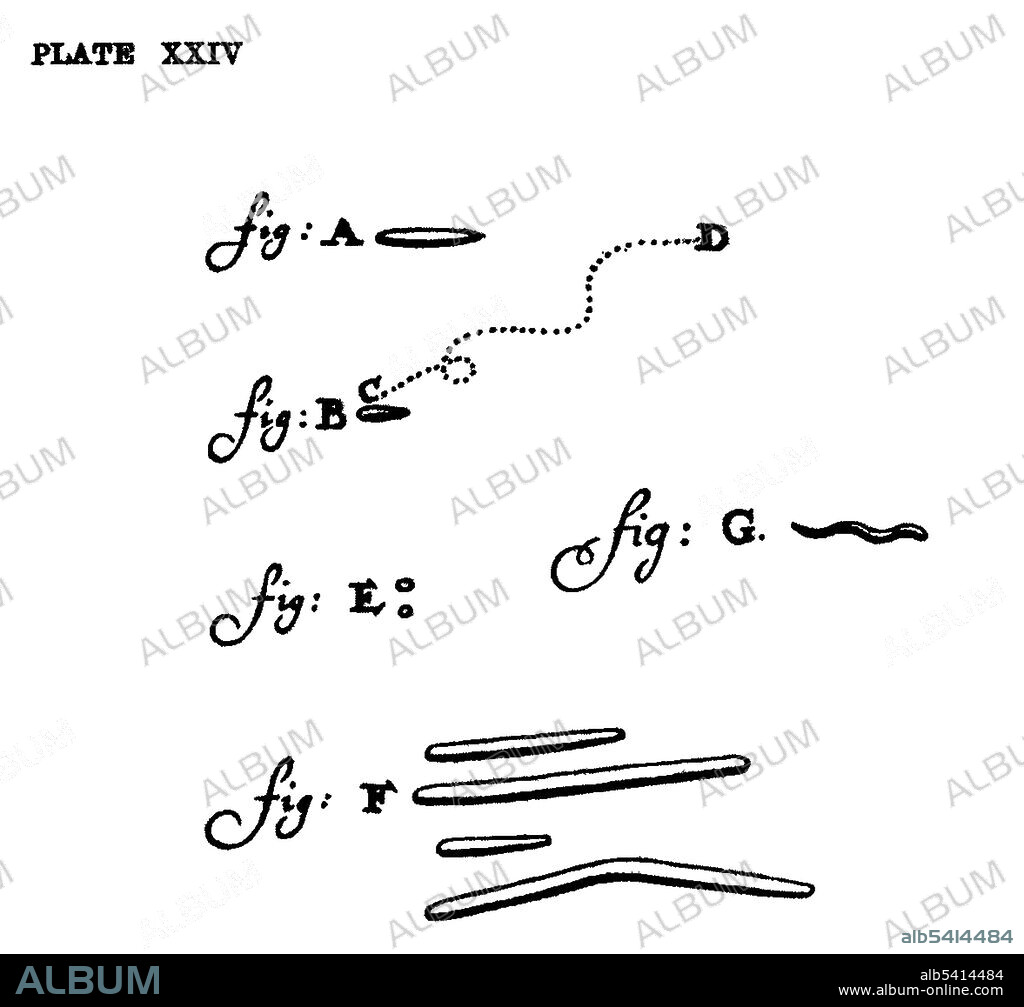alb5414484
Drawings of "Animacules" by Leeuwenhoek

|
Añadir a otro lightbox |
|
Añadir a otro lightbox |



¿Ya tienes cuenta? Iniciar sesión
¿No tienes cuenta? Regístrate
Compra esta imagen.
Selecciona el uso:

Título:
Drawings of "Animacules" by Leeuwenhoek
Descripción:
Traducción automática: Dibujos de animálculos de la carta de Leeuwenhoek del 17 de septiembre de 1683 a la Royal Society de Londres, en la que describe lo que vio cuando mezcló "materia blanca" de entre sus dientes limpios con agua de lluvia y la examinó bajo sus microscopios. Los animálculos ahora se identifican como tipos de bacterias. A) es un bacilo móvil. B) Selenomonas buccalis y la trayectoria de su movimiento (C a D). E) Micrococos. F) Leptothrix buccalis. G) Una espiroqueta, probablemente Spirochaeta buccalis, la más grande que se encuentra en la boca. La figura F no aparece en la carta original. Fue publicado en una edición latina de la obra de Leeuwenhoek titulada Arcana Naturae Detecta (1695).
Drawings of animalcules from Leeuwenhoek's letter, 17th September 1683 to the Royal Society in London, in which he describes what he saw when he mixed "white matter" from between his cleaned teeth with rain water & examined it under his microscopes. The animalcules are now identified as types of bacteria. A) is a motile bacillus. B) Selenomonas buccalis & the track of its movement (C to D). E) Micrococci. F) Leptothrix buccalis. G) A spirochaete, probably Spirochaeta buccalis, the largest one occuring in the mouth. Figure F does not appear in the original letter. It was published in a Latin edition of Leeuwenhoek's work titled Arcana Naturae Detecta (1695).
Crédito:
Album / © SCIENCE SOURCE/SCIENCE SOURCE
Autorizaciones:
Modelo: No - Propiedad: No
¿Preguntas relacionadas con los derechos?
¿Preguntas relacionadas con los derechos?
Tamaño imagen:
3000 x 2796 px | 24.0 MB
Tamaño impresión:
25.4 x 23.7 cm | 10.0 x 9.3 in (300 dpi)
Palabras clave:
 Pinterest
Pinterest Twitter
Twitter Facebook
Facebook Copiar enlace
Copiar enlace Email
Email
